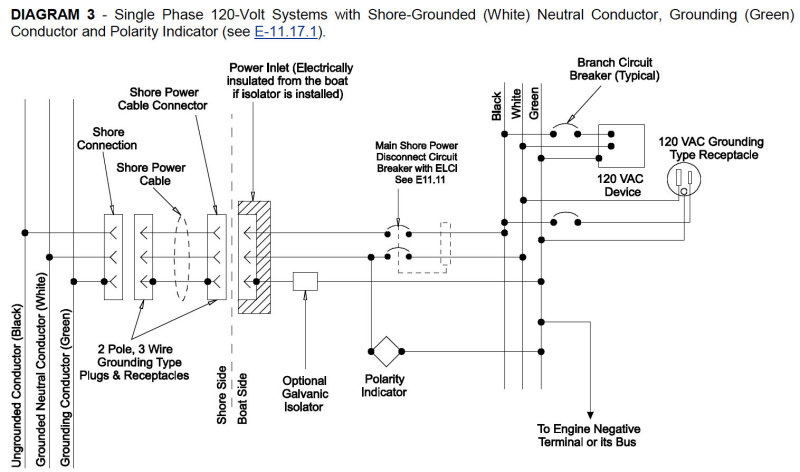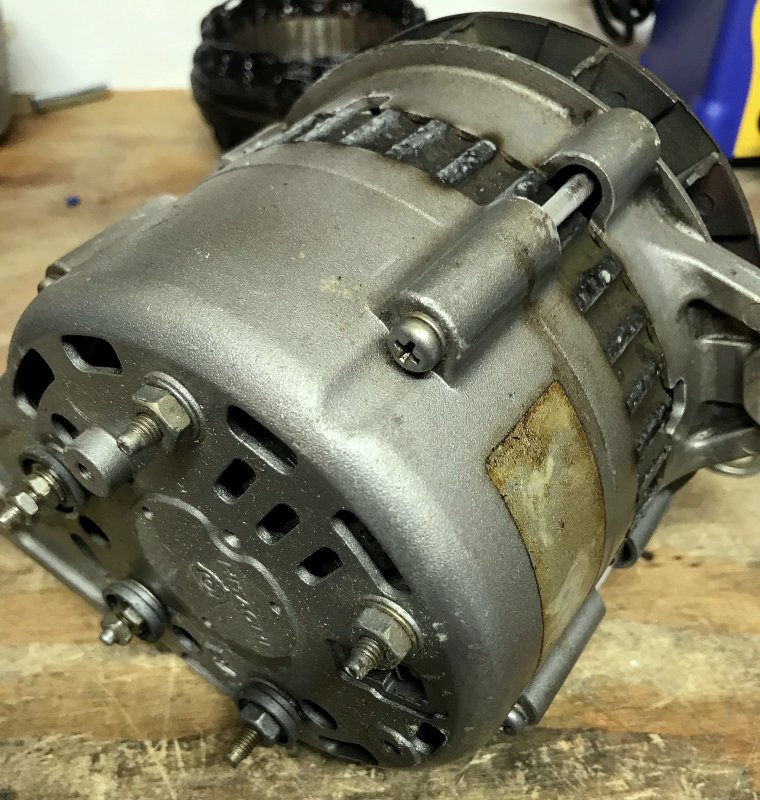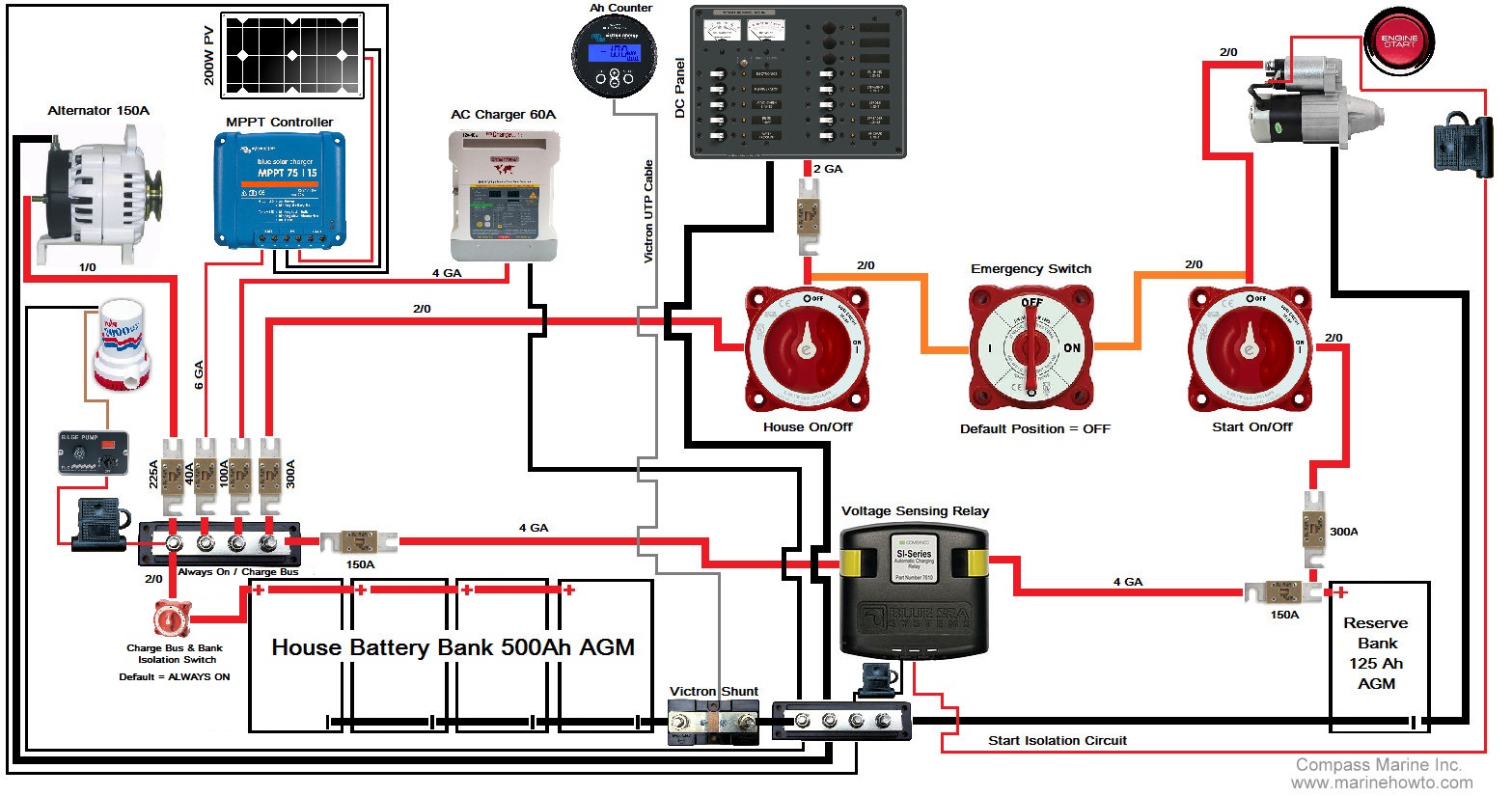No, as stated, this is only the DC Foundation diagram.Did you include an AC diagram? I'm particularly interested in the AC ground to DC ground connection.
AC Green/Protective Earth is always connected to the vessels DC ground.
It is critically important that AC White/Neutral never be bonded to AC Green except back on shore. There are a few exceptions to the Neutral to Grounding bond though. If you have an inverter or generator then this bond needs to occur only when those devices are operating and this neutral to ground bond can only be made while physically inverting for AC or physically generating AC power.
This is what a typical basic AC install would look like: (Note the green grounding wire goes to DC engine negative terminal or its bus)




